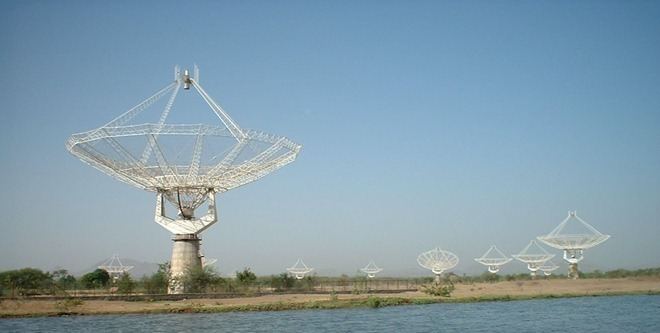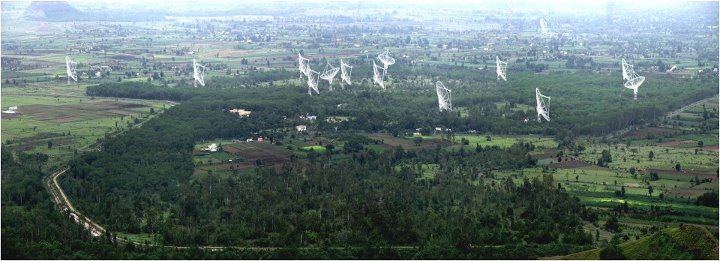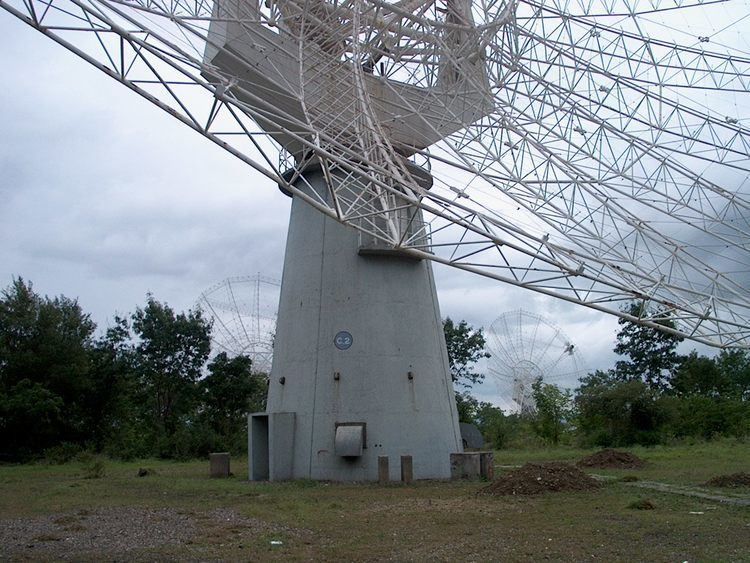Wavelength radio 50 to 1500 MHz Diameter 45m | Built First light 1995 | |
Telescope style array of 30 parabolic reflectors | ||
India s giant metrewave radio telescope gmrt world s largest
The Giant Metrewave Radio Telescope (GMRT), located near Pune in India,World's Largest Radio Telescope is an array of thirty fully steerable parabolic radio telescopes of 45 metre diameter, observing at metre wavelengths. It is operated by the National Centre for Radio Astrophysics, a part of the Tata Institute of Fundamental Research, Mumbai. At the time it was built, it was the world's largest interferometric array offering a baseline of up to 25 kilometres (16 mi).
Contents
- India s giant metrewave radio telescope gmrt world s largest
- Giant metrewave radio telescope gmrt in action
- Location
- Science and observations
- Activities
- References

Giant metrewave radio telescope gmrt in action
Location

The GMRT is located about 80 km north of Pune at Khodad. A nearby town is Narayangaon which is around 9 km from the telescope site. The office of NCRA is located in the Savitribai Phule Pune University campus.
Science and observations
One of the aims for the telescope during its development was to search for the highly redshifted 21-cm line radiation from primordial neutral hydrogen clouds in order to determine the epoch of galaxy formation in the universe.

Astronomers from all over the world regularly use this telescope to observe many different astronomical objects such as HII regions, galaxies, pulsars, supernovae, and Sun and solar winds.
Activities

Each year on National Science Day the observatory invites the public and pupils from schools and colleges in the surrounding area to visit the site where they can listen to explanations of radio astronomy, receiver technology and astronomy from the engineers and astronomers who work there. Nearby schools/colleges are also invited to put their individual science experiments in exhibition and the best one in each level (primary, secondary school and Jr. college) are awarded.
Visitors are allowed into GMRT only on Fridays in two sessions - Morning (1100 hrs - 1300 hrs) and Evening (1500 hrs to 1700 hrs). The GMRT is open to the public on National Science Day.
